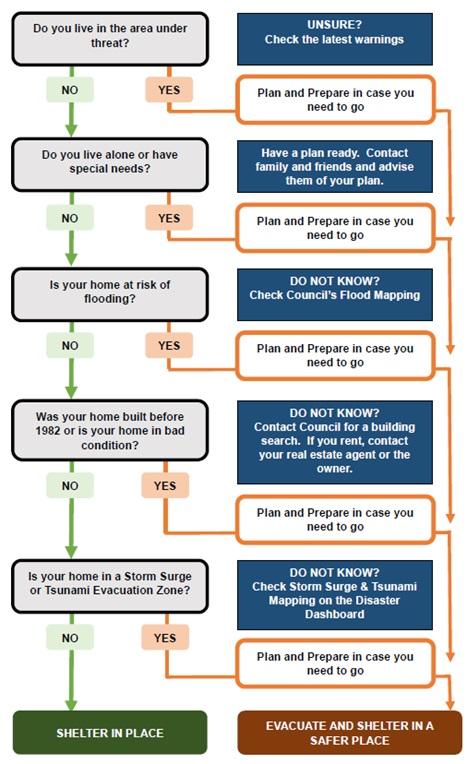Shelter and Evacuation Options
Firstly, determine your need to evacuate:

While the first preference is to ‘shelter-in-place’ – stay where you are, it may not be possible due to the type of disaster occurring (i.e. approaching bushfire).
If you are required to evacuate, the second preference is for people to shelter with friends and family (if safe to do so). In most instances, you will need to manage your own self-evacuation, making arrangements for transportation and for your animals.
If evacuation is required, an evacuation warning wil be issued letting you know:
- Areas to be evacuated and why.
- Evacuation routes.
- Type and location of safer places and/or Evacuation Centre/s.
- Lead time.
- Anticipated duration.
- Evacuation kit contents.
The different types of facilities or safe locations that may be available include:
- Assembly points – a designated location where evacuees can gather prior to their coordinated movement to evacuation centres. Assembly points may not be staffed, and evacuees may need to provide their own basic requirements for a short stay.
- Places of refuge - are NOT evacuation centres and offer limited resources. They are usually a building where people may shelter before a threat / event impacts or immediately after impact (less than 18 hours).
- Neighbourhood Safer Places (NSP) - local open spaces or buildings where people may gather, as a last resort, to seek shelter from a bushfire. Neighbourhood Safer Places will NOT GUARANTEE safety in all circumstances. Firefighters may not be present. Open spaces may not provide shelter from the elements, particularly flying embers. Identified NSP’s within the Bundaberg Region are open spaces only and their location can be found on the Queensland Fire Department website.
- Evacuation centres - designated building/s where evacuees are provided with basic elements, including food and water and short-term accommodation for the duration of the event. An evacuation centre may be opened dependent on the nature and severity of an event and details of their location will be released to the community once the centre/s are established.
